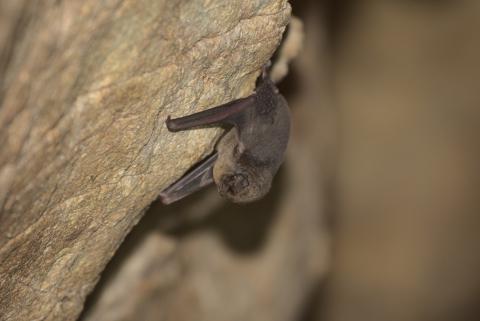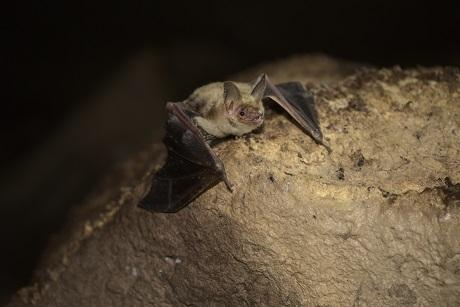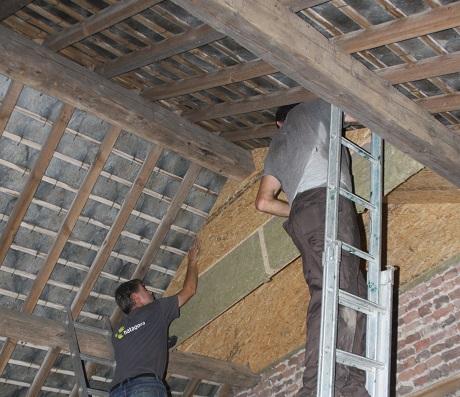
They eat lots of insects, helping to reduce the numbers of mosquitoes, grasshoppers and other pests on farms. And many plants cannot survive without bats pollinating them and spreading their seeds.
The EU multi-species action plan for the conservation of all bat species supports the conservation of the 45 bats species listed under the Habitats Directive. And, the EU Biodiversity Strategy to 2030 aims at halting and reversing the decline of all species including bats.
LIFE projects too are playing an important role in ensuring that this long-misunderstood species thrives well into the future. Below is a selection.
Protecting nine bat species in Bulgaria
Bats can eat up to 100% of their body mass in insects every day. Attracting them to farms, therefore, allows organic farmers to use natural insect control and fertilisers free from chemicals. The team behind LIFE UNDER ONE ROOF aims to help such farmers by improving the conservation status of nine threatened bat species in eight key Natura 2000 sites in Bulgaria. To this end, the team is building bat houses and bricks to encourage roosting. It is also restoring livestock watering places to benefit foraging bats and protecting bat colonies during their sensitive breeding and hibernation periods. The team is also keen to change the negative perceptions of bats among the wider public. To achieve this goal, it is organising field conservation trips for locals, running public outreach campaigns and working with schools to create awareness on how valuable bats are for ecosystems.

“But now you know” media campaign in Greece
In Greece, cavers, archaeologists and tourist guides often lack any knowledge of bats and their conservation needs. As a result, they often undertake unauthorised visits to closed caves which can injure and even kill the bats living there. These visits can also destroy the bats’ habitats.
The team behind LIFE GRECABAT has set out to improve the conservation status of 10 endangered bat species while protecting their roosts in selected caves. It has set up advanced monitoring and early warning systems for caves and cave fauna. The team also plans to develop National Action Plans for the bats and their habitats.
Meanwhile, an illustrated children’s story (in Greek) developed under the project explains to young readers the importance of proper cave management for their fauna. The team has also produced three TV spots with the theme of “But now you know” on caves, bat species and cave invertebrates, which have been aired nationwide.

Restoring grasslands and bat populations in the Meuse valley
The main focus of the LIFE Pays Mosan project is to restore grasslands in Belgium’s Meuse valley. As part of the project, the team is also looking to improve our knowledge of four endangered species of bats in the region.
The team has visited more than 300 buildings like churches and castles that are home to these bats. As a result, the number of known bat nurseries in the area has increased from 16 to 34 with more than 2 300 individuals counted. The project team has also set up a bat restoration plan for Wallonia. This plan involves building hedges, orchards, ponds and nursery roosts of importance to bats. To date, more than 50 km of hedges have been planted and the team’s work has attracted the attention of the Walloon government who are themselves aiming to plant 4 000 km of hedges in the region. Both sides have since met and agreed to set up a special task force.

Preserving a rare bat species
The six-year Belgian nature Integrated project (BNIP) is restoring the country’s most valuable and threatened species and habitats. One of its actions involves protecting a bat species rare to Belgium called the barbastelle bat. The team has carried out an inventory of the species and discovered an important new nesting site in Orval in the south of the country. It is now working with municipalities and landowners to restore the bat's habitat.
Keeping the pond bat safe from visitors
The pond bat is one of the rarest and most threatened bat species in Europe. Many of its winter roosts have either been destroyed or disturbed by human visitors. Estonia is one of the most important wintering sites for the pond bat and conservation actions there can have a big impact on the entire population across Europe.
To reduce these bats from unwanted visitors, the EstBatLIFE project team is erecting fences and installing video and security surveillance at all of its project sites. The number of visitors to these sites is now restricted meaning hibernating bats are less disturbed and their survival rate should soon start to rise. Also, to improve public perception of bats, the team is currently holding a so-called "Terribly adorable bats" exhibition at the Estonian Museum of Natural History, which will run until September next year.

Preserving endangered bats on a French military camp
The Valbonne military camp in southwestern France is one of the most impressive dry grassland areas in Europe and includes three Natura 2000 sites. But its habitats and species are threatened due to bad management, overgrowth, invasive alien species, land-use changes, and hunting. The LIFE Valbonne project team has set out to conserve the natural habitats within this military camp, which also happen to host three endangered bat species. The team is preserving these bat populations by improving their hunting areas and creating more favourable conditions for their survival.

Details
- Publication date
- 28 October 2020
- Author
- Executive Agency for Small and Medium-sized Enterprises

